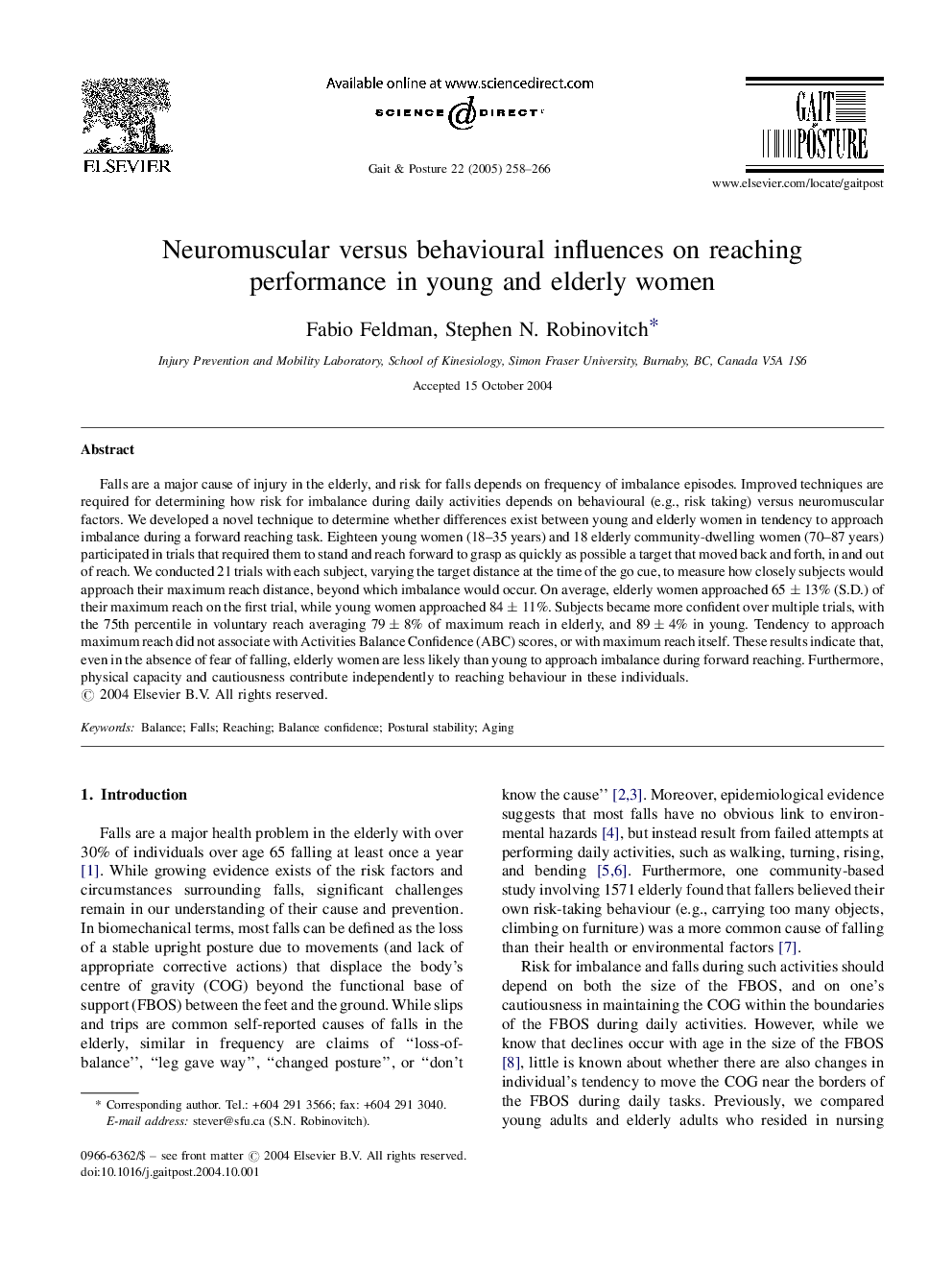| Article ID | Journal | Published Year | Pages | File Type |
|---|---|---|---|---|
| 9352772 | Gait & Posture | 2005 | 9 Pages |
Abstract
Falls are a major cause of injury in the elderly, and risk for falls depends on frequency of imbalance episodes. Improved techniques are required for determining how risk for imbalance during daily activities depends on behavioural (e.g., risk taking) versus neuromuscular factors. We developed a novel technique to determine whether differences exist between young and elderly women in tendency to approach imbalance during a forward reaching task. Eighteen young women (18-35 years) and 18 elderly community-dwelling women (70-87 years) participated in trials that required them to stand and reach forward to grasp as quickly as possible a target that moved back and forth, in and out of reach. We conducted 21 trials with each subject, varying the target distance at the time of the go cue, to measure how closely subjects would approach their maximum reach distance, beyond which imbalance would occur. On average, elderly women approached 65 ± 13% (S.D.) of their maximum reach on the first trial, while young women approached 84 ± 11%. Subjects became more confident over multiple trials, with the 75th percentile in voluntary reach averaging 79 ± 8% of maximum reach in elderly, and 89 ± 4% in young. Tendency to approach maximum reach did not associate with Activities Balance Confidence (ABC) scores, or with maximum reach itself. These results indicate that, even in the absence of fear of falling, elderly women are less likely than young to approach imbalance during forward reaching. Furthermore, physical capacity and cautiousness contribute independently to reaching behaviour in these individuals.
Related Topics
Health Sciences
Medicine and Dentistry
Orthopedics, Sports Medicine and Rehabilitation
Authors
Fabio Feldman, Stephen N. Robinovitch,
